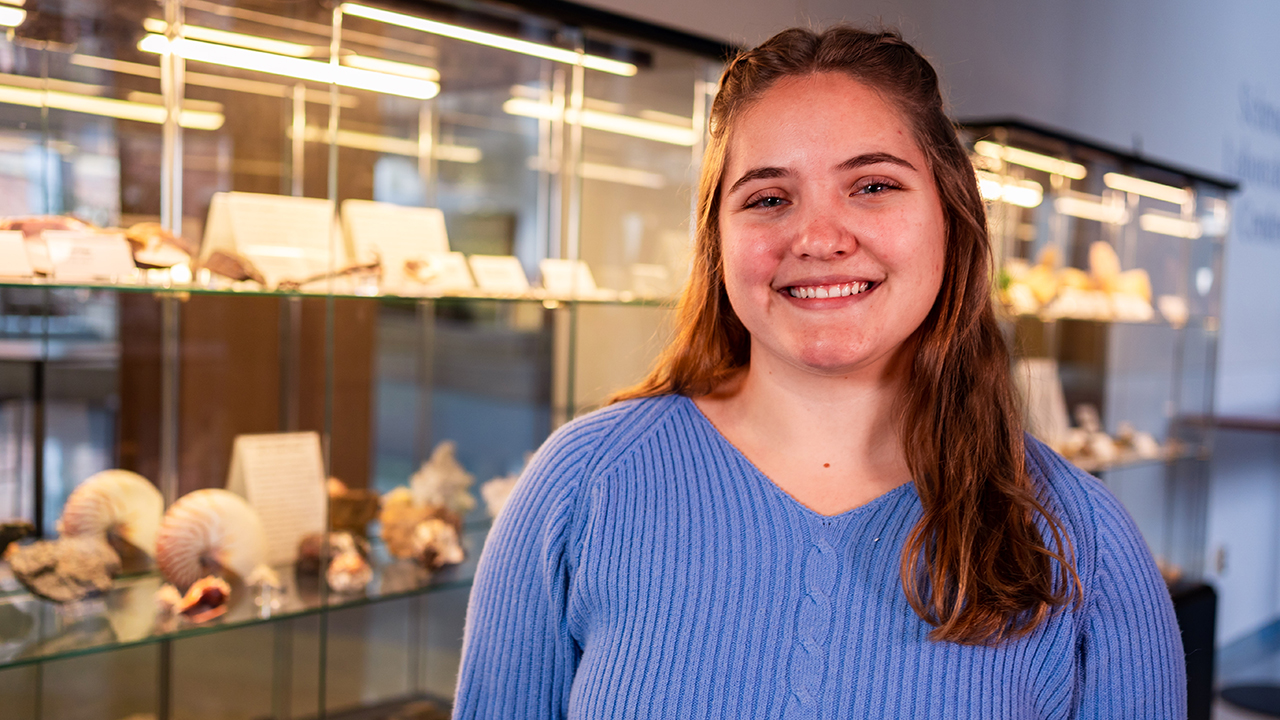
Mary Larson’s passion for science and the outdoors started when she was young.
“I really wanted to be a horticulturalist, but I didn’t really know what that was,” Larson said. “I had a little microscope that I kept putting stuff under, like plants.”
That passion never left her.
Larson maintained a curiosity about science and the outdoors when she arrived at WSU, but it came into full fruition after taking a few introductory classes in geoscience and hydrology.
Larson, who already has an impressive background in the field of geoscience, plans to study hydrology, the study of water, at the graduate level next.
This Fall, Larson will be graduating with an Environmental Science and Spanish double major with a geography minor.
“One of my general education courses was natural disasters with Dr. Stephen Allard,” Larson said while talking about her geoscience class. “Then I took watershed science next and that’s when I was really like, I want to study water and water on Earth’s surface.”
To Larson, water itself as a resource was intriguing to her, and hydrology was an area that she could further explore that interest.
I want to help better our water resources since we have quite a bit of fresh water in our area. I want to help protect and better manage it.
Choosing Environmental Science and Spanish as her majors opened up many opportunities for Larson, including internships, jobs, immersive field work, and even a study abroad experience where she visited the Perito Moreno Glacier in Argentina and later did a project on it when she returned.
“I think my favorite thing that I got to do was go to Duluth, Minnesota, with my minerals and rocks class,” Larson said. “Dr. Allard brought us there for an extended weekend and he showed us some really cool rock structures and cool unique rocks to the area.”

Not only did Larson like to be immersed in field work, but also she eventually grew an appreciation for the process of research.
“I worked on a research project where I evaluated the soil quality in the Winona State SEED Garden to discover how well the soil helps plants grow and to make it better,” Larson said. “From that experience, I realized that I would like to pursue research.”
Larson learned more about the problem, collected soil samples, completed a nutrient analysis in the lab, investigated the water content in the soil, evaluated the soil quality, researched the data, and came up with ways to fix it.
With this research project, Larson was selected to work one-on-one with Dr. Candace Kairies-Beatty (K.B.)—who later became a mentor who connected her to more opportunities.
I had really great professors to help me, and my research adviser, Dr. K.B, helped me through looking at graduate schools and talking me through the process.
Following her research project with Dr. K.B, Larson completed an internship where she assisted with herbicide studies at the University of Wisconsin-Madison.
Currently, Larson is working as a Geographic Information Systems Technician (GIS). For the next year, she’ll continue to map wetlands for the Fish and Wildlife Service. After this, Larson will pursue a graduate degree at at possibly the University of Wisconsin-Madison or the University of Minnesota-Twin Cities—which both have great hydrology programs.
In the future, Larson is enthusiastic to get started on solving issues related to water and preserving those resources.
We will need to figure out ways to reverse and slow down the contamination of our water systems. I think it’s really important to be able to manage the water resources and protect it.